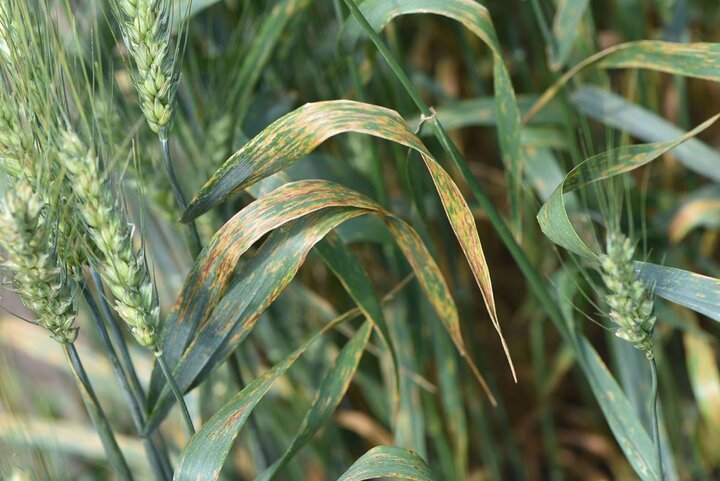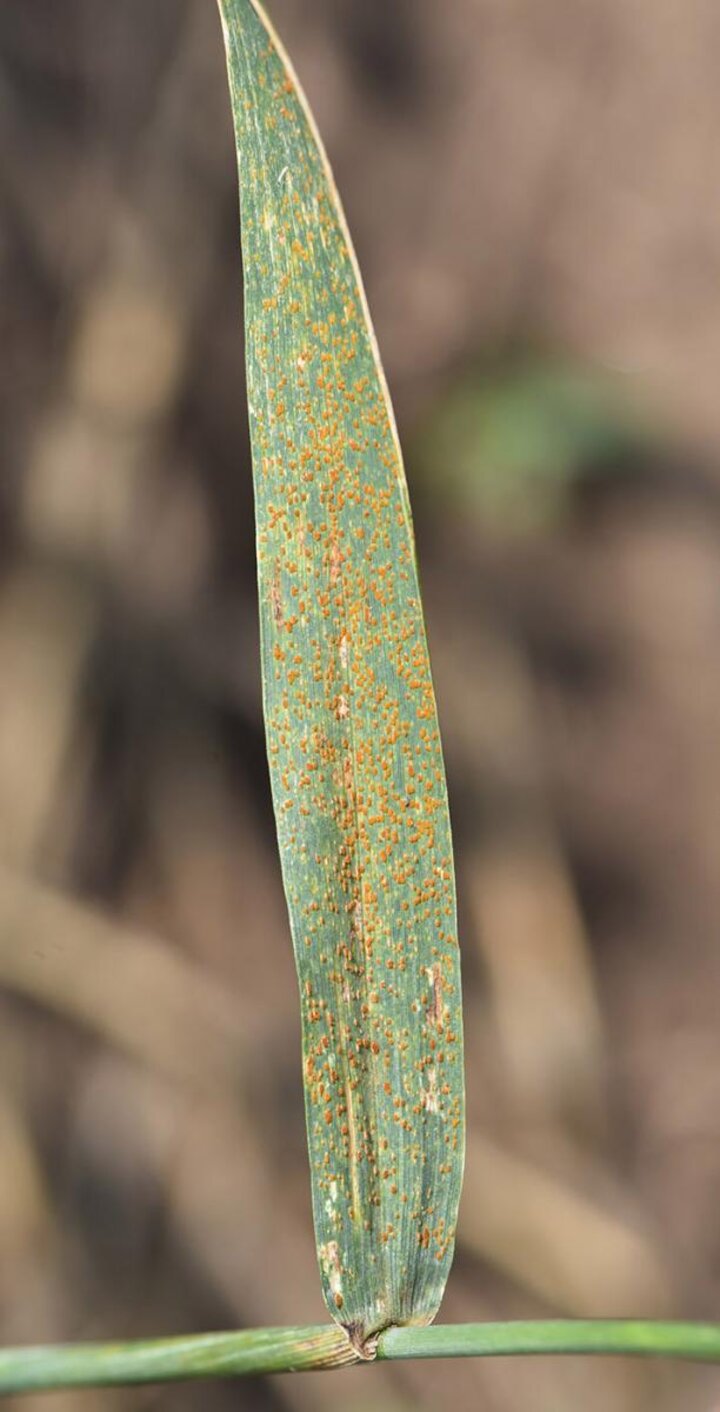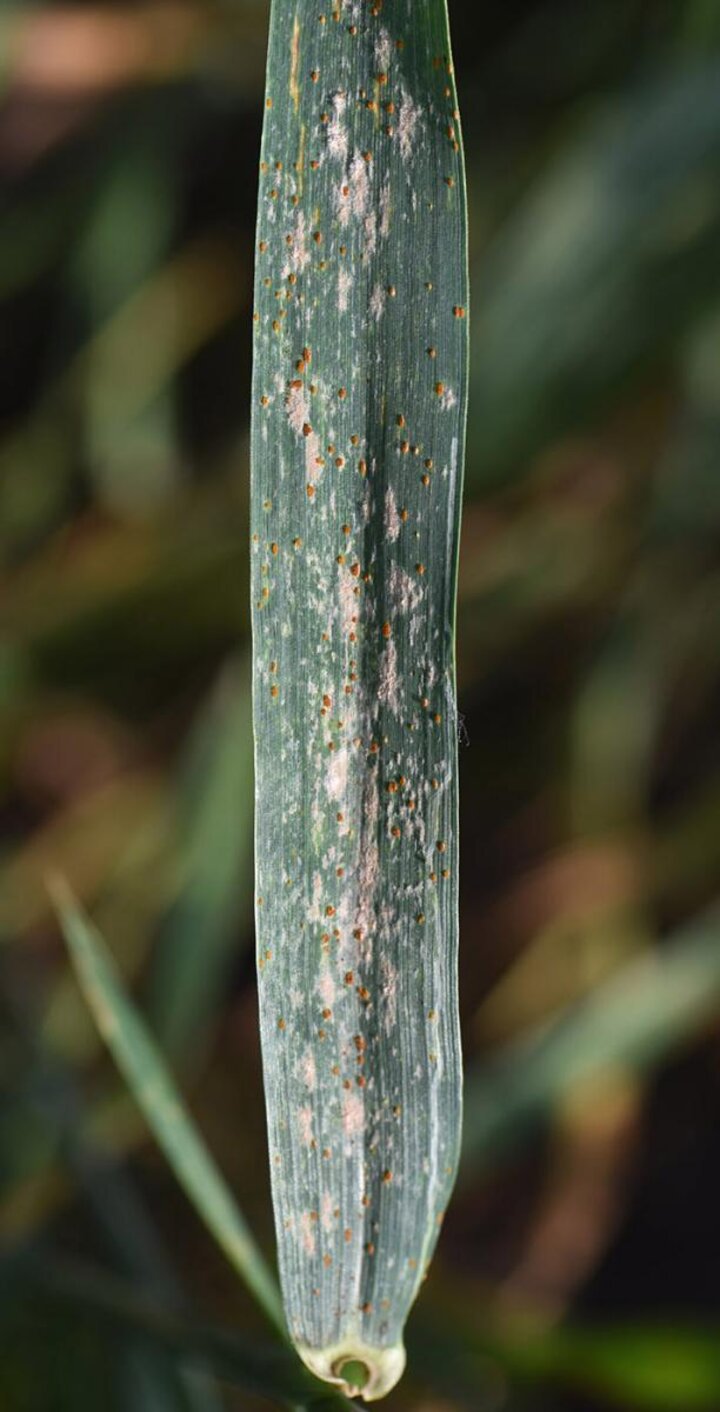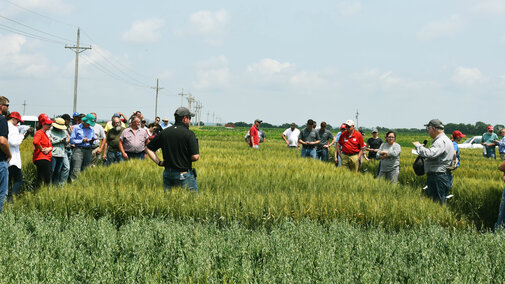Isolated thunderstorms and localized rains the last two weeks have created conditions favorable for disease development.
During a wheat plot tour (Figure 1) at the Eastern Nebraska Research and Extension Center (ENREC) on June 12, several diseases were observed at moderate to high levels for the first time this growing season. The most prevalent disease was bacterial leaf streak (Figure 2), also known as black chaff when it occurs on wheat heads. There also have been a few reports of bacterial leaf streak in growers’ fields.
Leaf rust (Figure 3) was also observed, ranging from low severity in most plots to high severity in plots planted with susceptible lines. Other diseases observed at trace to low levels were powdery mildew (Figure 4) and Fusarium head blight.
Management
Bacterial leaf streak cannot be controlled once it occurs. Managing irrigation to allow the foliage to dry can help reduce the development and spread of the disease within a field. It is too late to spray a fungicide to control fungal diseases. The late onset of leaf rust will likely have minimal impact on yield, especially in areas that are relatively dry and where wheat development is at or past the hard dough growth stage.



Leaf rust (Figure 3, left) and powdery mildew (Figure 4) in research plots at the Eastern Nebraska Research and Extension Center (ENREC) near Mead in Saunders County on June 12.

